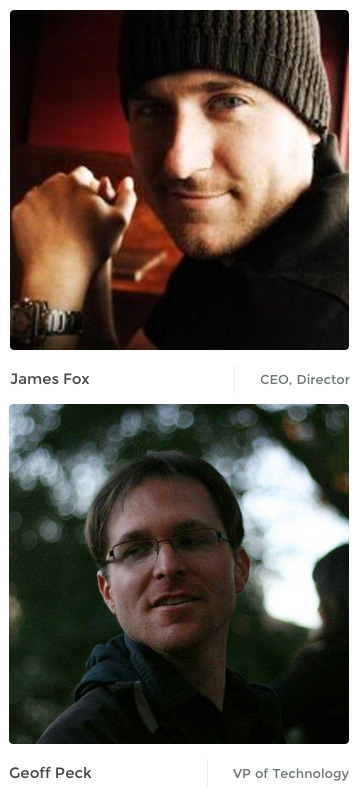 4K has been called everything from a trend to the future of the industry, but no matter what your feelings are it’s not something that you can ignore. Numerous opportunities are created at nearly every stage of production with 4K, and decisions around shooting or not shooting in 4K impact the entire production.
4K has been called everything from a trend to the future of the industry, but no matter what your feelings are it’s not something that you can ignore. Numerous opportunities are created at nearly every stage of production with 4K, and decisions around shooting or not shooting in 4K impact the entire production.
James Fox and Geoff Peck are two people who understand what intelligent decisions around 4K can mean to any production. As the CEO and VP of Technology at Dawnrunner, the guys take projects from concept to completion while delivering incredible value to and for their clients. They were featured guests during a webinar that took place on July 10th where they talked through all things 4K with the live audience.
We talked to the Dawnrunner team about the production environment in San Francisco, the advantages of filming in 4K and what attendees of the webinar were able to see and experience.
ProVideo Coalition: Tell us about DawnRunner.
Dawnrunner Team: Dawnrunner is a full service boutique production house based in San Francisco. We take great pride in our work, our community and our three core objectives: to Imagine, Innovate and Inspire within the film industry.
Can you share some details around a few of the projects you're working on?
We are currently finishing up post-production on our first independently produced feature film, THE DARKEST MATTER. The film is a sci-fi thriller shot entirely in studio on a greenscreen, with the Red One in 4K. It's very post and VFX heavy, so it's been a labor of love for a few years. We also are knee-deep in pre production for two episodic narratives that we cannot release any information on currently. All the while we continue to produce high quality video and motion graphics content for our wonderful clients!
San Francisco's presence in the production and post-production space has greatly increased over the last few years. What's the reason behind that, and do you see this trend continuing?
We definitely anticipate that this trend will continue. As more and more of the industry adopts advanced digital workflows, the “support base” for the industry will likely shift to the technology center of world, which is here in Silicon Valley. All of the major supporting technology companies are represented if not headquartered in the greater Bay Area. Top to bottom, we're talking about the major players like Adobe, Avid, NVidia and Apple, to disruptive startups that provide a very broad spectrum of tools. Not to mention the very strong digital animation and visual effects presence that already exists in the Bay. The film industry is being shaken up, and we've put our money on it landing – in a very meaningful way – in the SF Bay Area.
There are some people who are down on 4K, seemingly on principle alone. Why do you think that is?
Traditionally the film industry is very resistant to change. It's strange because it also tends to be a very innovative sphere as well. We chalk the resistance to adopting 4K up to what we have dubbed, “transition fatigue.” Essentially we just finished a move from film to digital, and now we're supposed to change our workflow again! Bigger, traditional style studios move a lot like heavily loaded freighter ships – very, very slowly. Even when new technologies provide measurable advantages they have a tendency to avoid early adoption. When the working standards change within the course of a year, and every few months there's a “new” “better” “faster” “higher quality” way to do something it can become a bit overwhelming. Workflows have become iterative, where previously the workflow for making a movie was the same for approximately 80 years. Now, you can change your workflow mid project…It's crazy, but it happens. Dawnrunner operates under a nimble philosophy in an effort to not only weather these fast-moving advances in the technology, but benefit from them in a tangible way without suffering the same transition fatigue.
Generally speaking, what sort of advantages does 4K offer a producer or director over HD or even 2K?
Being a trained director first and foremost I find the advantages that filming in 4K provides to be almost like cheating. The ability to utilize a lot of tricks and cheats while in production without sacrificing quality in post production is pretty astounding. From digital re-framing, pan and scan, and padding the frame, the director has additional layers of control to get the shot that they want. You're able to do a lot more, all while saving time and money – which typically makes your producers very happy as well.
Have you run into any hardware or software limitations when working in 4K?
Absolutely! It's not a matter of “are there limitations”, it's how you work through those limitations. This is still somewhat uncharted territory, and while there are production companies that have been wildly successful working in 4K – there are a lot of moving parts to the workflow. Ultimately, however, the fact remains despite the limitations of bandwidth, storage, processing, etc. the advantages of working within a 4K space far outweigh the disadvantages. These are largely workflow problems, and although there is no one right way to setup your workflow, there are more and more solutions being implemented as the industry adopts this format.
 One thing people who are down on 4K don't talk about is that just because something is shot at 4K doesn't mean it needs to be delivered at 4K. Do you think this is a distinction most professionals are aware of or making?
One thing people who are down on 4K don't talk about is that just because something is shot at 4K doesn't mean it needs to be delivered at 4K. Do you think this is a distinction most professionals are aware of or making?
This is the new paradigm and there is a large advantage in shooting a higher resolution than your delivery format for many reasons. Right now 4K delivery is still in it's infancy. However, once it's widely adopted we will want to already be filming in 6K! We've already mentioned some of the creative reasons for filming in a higher resolution than your delivery, but quality is a factor as well. When you shoot at 4K and you deliver in 2K or 1080p you are in essence creating a much sharper, cleaner and more presentable film.
Why should people be concerned about future proofing?
4K consumption is coming, and faster than HD adoption! If you shoot in 2K to deliver in 2K, you're painting yourself into a corner and putting an expiration date on your film. Films (shot on 35mm film) can be rescanned at 4K and enjoy new life on our massive 4K displays, but the film shot in 2K will need to be up-ressed and doctored heavily, or frankly just will not ever really look right. Why would you do that to yourself?
Given your experience with 4K, what kind of questions do you think people will be asking and want you to talk through?
When I talk to people about 4K I'm mostly asked about the specifics of our process – the hardware and software involved. I do share those details with people, but I don't think that there is one “right” way to build a workflow and it can be difficult to answer – it's very dependent on your experience, the resources you have available and the goals you're trying to accomplish.

Filmtools
Filmmakers go-to destination for pre-production, production & post production equipment!
Shop Now














